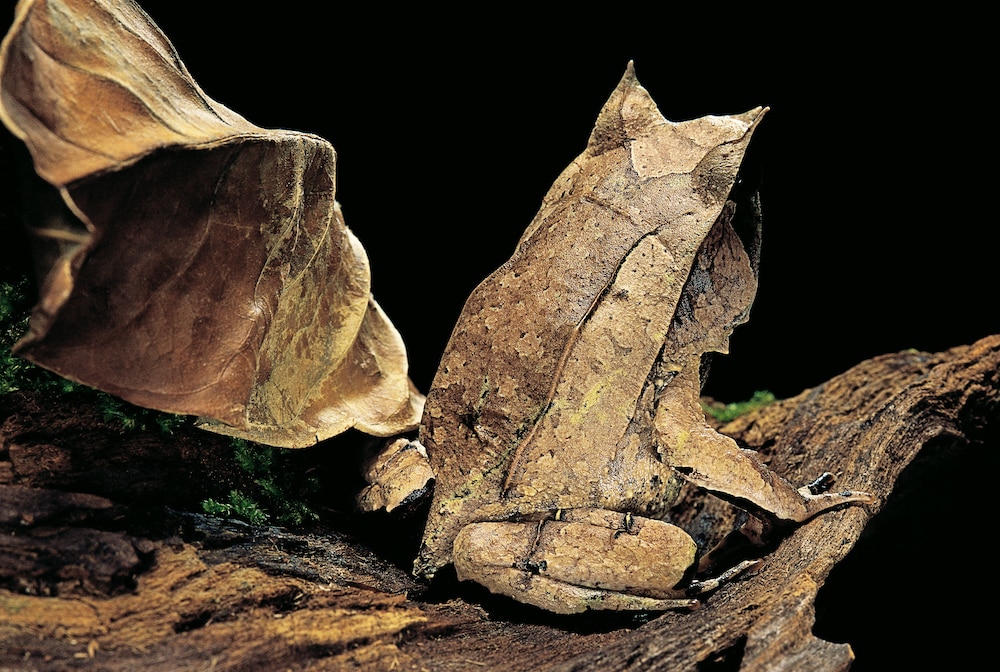Create a free profile to get unlimited access to exclusive videos, sweepstakes, and more!
Brains or beauty? Frogs choose intelligence or camouflage to evade predators
Researchers noticed that frogs with fewer predators tend to have larger brains.

When a frog becomes intelligent enough, it learns to play the banjo and host a variety show called The Muppets. Unfortunately, most frogs don’t have the level of cognition required for that lush lifestyle and are left to fight for their survival in the wild. That’s not to say that frogs aren’t smart. There is a range of intelligence across thousands of species, ranging from big-brained baddies to humbler hoppers, and just how smart an individual frog is might come down to how many predators it has to deal with.
Ying Jiang from the Key Laboratory of Southwest China Wildlife Resources Conservation at China West Normal University, and colleagues, have spent the better part of a decade studying the survival strategies of amphibians hoping to break down when and why a particular strategy works better than another. During the course of their work, they noticed a pattern, that frogs with fewer predators tend to have larger brains. Their results were published in the journal Science Advances.
A cursory look at the wide variety of animals on our planet reveals myriad tactics for avoiding predators. An animal might become too large to bother, it might employ camouflage to avoid detection, or it might display warning signals through coloration, to name a few. The tactic a particular species evolves is dependent both on the natural environment it lives within and external pressures from peers and predators.
“Animals adopting different strategies will consider benefits and costs, and when the benefits are too costly, they will adopt another strategy,” Jiang told SYFY WIRE.
The commonsense assumption is that the higher the predation risk, the more intelligence becomes a benefit. Certainly, humans have little in the way of camouflage or inherent physical weapons and have been able to carve out a place at the top of the food chain because of our cognitive prowess. That same relationship doesn’t hold, however, if you’re a frog.
When it comes to evading predators, being smarter isn’t always better. The study found that some frogs employ comparatively large brains and strong hind legs to keep tabs on their environment and escape predation through brute force. When the predation risk is relatively low, frogs can afford to be conspicuous, making themselves visible to potential mates. Conversely, if the environment becomes too laden with predators, more passive strategies predominate. In those environments, frogs tend to trade in their big brains in favor of effective camouflage. Of course, this comes with its own costs. Finding mates can become more difficult and an individual’s movements are limited to environments they can blend into. It doesn’t make much sense to look like a leaf unless you’re surrounded by leaves.
There is also an apparent relationship between overall body size and which strategy a frog species chooses. “Generally, smaller frogs face more predators and tend to evolve to be more cryptic. However, when the individual is too small, the predator would consider the benefit of preying on them,” Jiang said.
There are also those frogs which have a grab bag of deterrents and avoidance techniques. Of the 102 species researchers studied, they found a small number which had large brains and camouflage. Those species tended to have no toxic glands, large bodies, and used vocal calls to communicate. If you’re large and non-toxic, it benefits you to be smart and as invisible as possible. Those species, however, were the exception to the rule.
In frogs, at least, it seems as though you can choose to be beautiful or brainy, and only rarely can you be both. Suddenly, the pumpkin toadlet's inability to do the most basic of frog activities makes a lot more sense. The study has important implications about how intelligence arises within animal groups and the ways in which predation pressures drive those adaptations. Researchers assume a similar relationship exists among lizards and could extend to a wider range of animals, although further study is needed to confirm the universality of this trade-off.
It's no wonder that Kermit is so plainly adorned. If he were any other way, he wouldn’t be able to hold a tune, let alone perform his hosting duties.


























